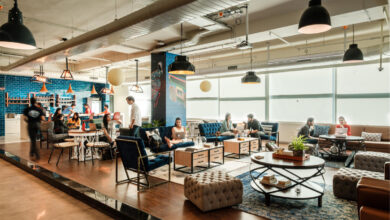
The Time Travelling Milkman
Written by Jane Norris for ‘Tales from Cybersalon’, June 2021.
The opening question my boss asked me was ‘What is the first material you meet in life? something essential to our survival … the only substance we both produce and consume?’ I knew he was talking about milk, but I hadn’t quite thought of it that way. He was right though, it’s odd stuff, milk. It often reveals how we treat the world around us. It shows how people’s attitudes to food change their high streets. Milk, our most intimate material, is one we have a strange relationship with.
Before I started in this business, milk was a living being. Back before the industrial revolution, I didn’t have a job. People only drank human milk. That milk was a vital bridge to physical independence and survival. It contained the wisdom of my family bacterial resistance, offered nourishment for my bones, lactose sugars to grow my brain. The live and volatile ‘being’ that was cow’s milk, was only given occasionally to the sick. Dairies had traditionally sold cheese not milk.
My first job was in 1810 in London. I sold a new luxury material, cow’s milk. I worked in a small cowshed with five cows. My customers knew my name and the cow’s names, and which cows from the sheds along The Strand in London gave the best quality milk. Those were good times. On saint’s days when I had some time off, I would walk across the fields to St. Martins church to chat to a girl I knew. Everyone in those days knew that milk’s flavour changed with the seasons. People understood milk as alive with its own characteristics and demands. Back then, your milk would have gone ‘off’ in a day.
But fifty years later in the mid 19th century when 80% of milk was produced in towns. Attitudes to Milk had changed. I was kicked out of my job. The rows of cowsheds from St Martins in the Fields to the Strand were cleared, to make London supposedly more hygienic. People said Milk was now unhealthy and dangerous. It was blamed for the epidemics of Typhoid, Scarlet Fever and Tuberculosis sweeping Europe. I remember the spring of 1862 when I heard from a mate in a coffee shop, that Louis Pasteur had learned to heat milk to high temperatures for short periods, killing the dangerous microbes in milk. This was good news as it would keep me in some employment. But the heat that killed the bad microbes, killed all the good microbes too — in fact it killed the milk. I was sad to see our relationship with milk change. It was no longer seen as a living being with micro bacteria to aid digestion and stimulate the immune system. Once it was dead it was sold in sterilised glass bottles. It certainly lasted longer, but it was now just a product to make money. I got a job working for one of the big dairies out of town, that collected milk from the farmers, treated it and delivered it in. I just had to put the right number of bottles on the right doorstep.
This was a stable job for many decades. The only thing that changed was that I swapped my horse and cart for an electric Milk Float and used to whirr up and down the increasingly busy streets of London. I got up early to try and miss the rush hour traffic, as people travelled to and from the big offices and shops they worked in. But things change, people’s attitudes to milk have shifted once more. Milk production became so industrialised that I didn’t make enough money on my personalised rounds. So, I lost that job and now work at the ‘Sainsburys Local’ stacking big plastic cartons of milk into the cooling cabinets. Some people still buy big two litre containers, but the numbers are reducing. they have found that drinking this dead white liquid has led to lactose intolerances. People are starting to avoid it. I notice the shelves of Almond ‘milk’ are increasing.
I guess as a response to this, the big industrial milk companies have converted dead milk into hundreds of different commercial opportunities. Milk is now marketed as a pro-biotic medicine by artificially adding the microbes back in, it is fortified with vitamins — suggesting it was lacking, it has had its fat reduced — as if it had too much or the wrong sort, it has been homogenised — as if it was somehow unacceptably diverse.
But this could be different, if people respected the live and transitory nature of the living being that is milk. If people want to benefit from cow’s milk, we need to keep it clean, fresh, and alive. We would then know the many benefits it brings to digestion, eczema, asthma, calcium deficiency, lactose intolerance perhaps Alzheimer’s and many other chronic conditions. But this would require a different relationship with cows, it would mean caring for our milk herds, ensuring they were naturally healthy, giving cows fresh clean grass and hay to eat, not processed grain pellets full of antibiotics. This would then oblige us to stop factory farming. This would then, change our use of town centres. Small milk herds would have to move closer to the consumer again, as the milk would have a shorter shelf life once more. We would need small fields with a handful of cows and a shed selling fresh milk, where local highstreets now have empty shuttered Poundland stores. People might come again to know mine and my cow’s names and be able to tell the difference in taste between their creamy summer and thinner winter milk.
In a post pandemic world, as many people continue to work and shop from home. Local high streets need to produce healthier food more locally. ‘Live milk’, could in turn enliven our highstreets. We might start to respect milk again, understand it as seasonal, with its own rights. And I might get my happiest job back, working on The Strand with my five cows.




